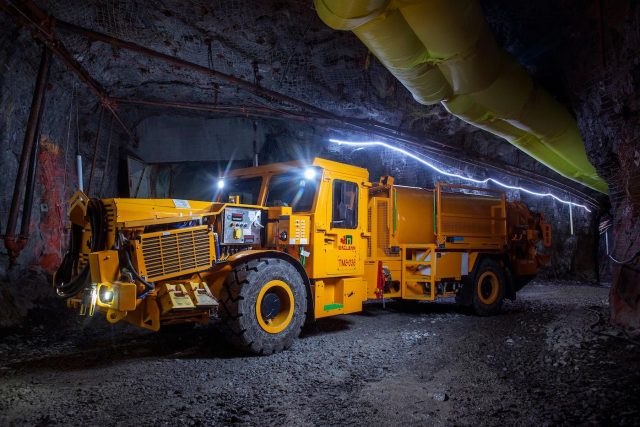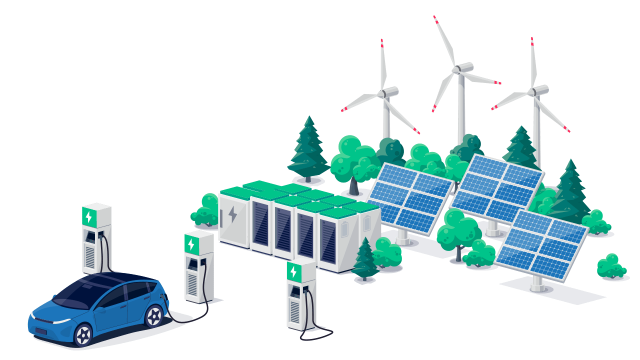Nuclear debacles: UK, Canada, U.S., IEA and others
Nuclear cost and time overruns
While nuclear power has gained interest as a low carbon solution, cost and time overruns have dampened this interest.
A Boston University study of 400 nuclear plants over 80 years indicated that, on average, building nuclear plants cost double the before construction projections, and 64% exceeded their timelines. Average costs go 120% over original budgets, with the majority more than doubling.
High maintenance costs add to the unattractiveness of the nuclear option, in particular, the old reactors in the U.S. and France.
There is no shortage of examples of cost and timeline overruns.
In 2008, the U.K government made an announcement on its first nuclear power plant, since 1995, the U.K. Hinkley Site C. Back then, the AP 1000 project was to be completed by 2020.
Subsequently, the project joint venture project group revealed it would not be completed until 2025. It ended up with a government bailout out and nationalization with a financing contribution from Chinese entities. Construction began in March 2017, with a timeline of 10 years. Now, 16 years after the original announcement, the project is still not completed. And the termination date has once more been revised, this time to 2030, more likely 2031, and by then only one of two reactors will be operational.
The Hinkley Site C AP 1000 original budget was US$11.3 billion, but the cost has been upped to US$62.7 billion.
The Netherlands approved 2 nuclear reactors 1-1.6 gigawatt (GW) each, expected to run up to US$5.5 billion by 2030. The revised cost is US$13 billion. There is no plan.
Like Hinkley Point Site C, Vogtle and Summer in the U.S., Flamanville in France and Olkiluoto in Finland, were all financial and scheduling fiascos.
Many view China as an exception, with 43 GW of nuclear capacity added between 2012 and 2022, building 3 nuclear reactors per year for the past 5 years, down from 7/year between 2016 and 2018. Notwithstanding, China’s nuclear path hasn’t been smooth. Poised to triple renewables capacity by 2030 with the addition of 3,100 GW of capacity, 300 GW of new solar and wind capacity installed in 2023, perhaps China will give up on nuclear.
Decline of the nuclear sector
During the period of 2000 to 2022, nuclear capacity as a percentage of global power generation declined by half, from 17% in 2000, to 9% in 2022.
The global number of nuclear reactors peaked in 2022 at 438 and that dropped to 407 in 23 counties by mid-2023. The average age of a reactor was 31.4 years in 2022.
All of the world’s reactors are losing money or are economically unviable. The costs of storage, typically for 250,000 years, are not factored in, massively subsidized.
In absolute terms, the global nuclear power supply increased 4% in 2022 compared to 2021, trailing all other power sources.
The long lead time to arrive at the operational stage means that no nuclear plant for which the planning began in 2020 can be completed before 2030. Too late for compliance with the Paris Agreement.
Successful nuclear programs
Successful nuclear programs in the U.S., France and South Korea were the object of major military involvement from the outset, including financing, technology requirements, safety, human expertise and weapons-grade enrichment of uranium. Each of these governments selected a one GW-scale model.
These military programs ran 20 to 30 years, thus were replicable for commercial use. This kept commercial reactor costs down.
Nuclear boosters’ learning disabilities
The International Energy Agency believes nuclear capacity will reach a new record in 2025.
At COP28, the U.S. lead the way for a pledge involving 25 nations to triple nuclear power generation.
In the nuclear development pipeline, China plans comprise 22 GW, India 6 GW; Turkey 4.5 GW; South Korea 4 GW; and Egypt 3.3 GW.
Rowing against the current as well, in a big way, is Ontario, Canada. More on Canada in the near last segment.
Small modular reactors, learning disabilities on steroids
Much hope for a nuclear renaissance lies with small modular reactors (SMRs), compact nuclear reactors. But SMRs have yet to get beyond start-ups. Not only are SMRs unproven, there are many competing designs, maybe 57.
SMRs, which produce less than 1 GW, cannot not achieve the necessary economies for a manufacturing scale, aren’t faster to construct, are inefficient and decommissioning is slow plus expensive. At best, one would have to wait until 2030 for scaling up SMR tech to be commercially viable.
Most governments, with the exception of China and Canada’s Ontario Premier, Doug Ford, don’t see the case for SMRs. After all, the costs are five times that of an onshore wind farm or solar project to produce the same amount of energy.
Notwithstanding SMRs are a failed technology, the U.S. government is pouring billions into SMRs. The U.S, has yet to have an operational SMR.
The U.S.-based NuScale had planned a SMR project for Oregan. It pulled out due to cost overruns.
The Utah Associated Municipal Power Systems (UAMPS) too, decided to back the construction of NuScale SMRs, a six-reactor 462 MW SMR project. Utah townships pulled out after the costs, upped to US$89 megawatt hour (MWh) from the original estimate of US$59/MWh, proved to be too high and timeline target for 2030 didn’t seem realistic. This, despite U.S. government providing US$1.4 billion.
Canada’s learning disabilities
Ontario, Canada
Of the 19 nuclear commercial reactors in Canada, 18 are in Ontario.
In Summer 2023, the Doug Ford government announced it would double the size of the Bruce Power nuclear station on the eastern shore of Lake Huron, currently the world’s largest.
At the Pickering station near Toronto, the refurbishing of the first two of four unit A reactors went C$1.5 billion over budget, leading to abandoning the refurbishing of the other two Unit A reactors. In 2020, Ford had said Pickering would be shut down by 2025.
Nevertheless, on January 29, 2024, the Doug Ford administration announced it would refurbish all four Pickering Unit B reactors. The government’s expects the refurbishment to cost C$19.4 billion with completion in eleven years, but that amount is uncertain.
Ontario Power Generation is currently reviewing the extension of the Pickering operating license until December 2026. If approved, the refurbishment would begin thereafter. The Ford government intends to start refurbishing the Pickering B plant after 2026. As a result, Ontario plans for decommissioning Pickering put on hold prime waterfront real estate for 30 years.
The Ontario Darlington station on the north shore of Lake Ontario cost C$14.5 billion, 4 times the originally estimated amount, with the timeline from planning to operation 1981 to 1993, 12 years. The Darlington plant cost overruns led to the Ontario Hydro equivalent to bankruptcy in 1988. Debt retirement costs have jacked up Ontario electricity rates.
The Darlington 4 reactors are now being refurbished with C$12.8 billion budgeted. To cover the costs of the refurbishing, Ontario would need to have an electricity tariff of 13.7 (24.4) cents per kWh.
Divulged in Summer 2023, the Darlington site, which has one SMR under construction, will get 3 more SMRs. Never mind SMRs are several times more expensive than renewables.
In the interim, until the expanded Ontario nuclear network is completed, the fossil fuel, natural gas, will be called upon to fill the supply gaps.
Lastly, Ontario still does not have secure nuclear waste storage sites. Currently, the province’s nuclear waste is stored in open pools or in casks in commercial grade warehouses alongside Lake Ontario.
New Brunswick, Canada
In New Brunswick, Canada, the only functioning Canadian nuclear station outside Ontario, the Point Lepreau CANDU reactor, commissioned in 1983, underwent a refurbishment, beginning March 2008. The refurbishment was supposed to cost C$1.4 billion and take to 18 months to complete. However, the time overrun went 3 years longer, to 2012, at a cost of another C$1 billion contributing to NB Power’s C$4.6 billion debt. Not daunted by empirical evidence, a second refurbishment is being considered for 2041. This assumes ongoing problems of unpredicted and planned outages and C$1 billion in lost production and repairs will be resolved.
Quebec, Canada
The current Coalition Avenir Québec government is considering re-starting operations of its Bécancour nuclear plant Gentilly-2, shut down in 2012.
The hic in Quebec energy action plan for 2035 is that it assumes optimum electrification without a plan for reducing demand. In 2021, Quebec consumed 23,000 kilowatt hours (kWh) per person while in France it was 7,000 kWh.
The takeaway
The global nuclear sector is mostly stagnant. Typically, since 2018, there are 3 new plants per year.
Also, it doesn’t help that plants must run 90% of the time to earn revenues. Most nuclear technologies are not amenable to changes in required production output, up or down.
It appears Ontario Canada, China, the U.S., the U.K., the IEA and a global nuclear cult are the last of the nuclear faithful, no matter what the facts are. And China is not too sure.
The nuclear faithful will find this article misleading.















